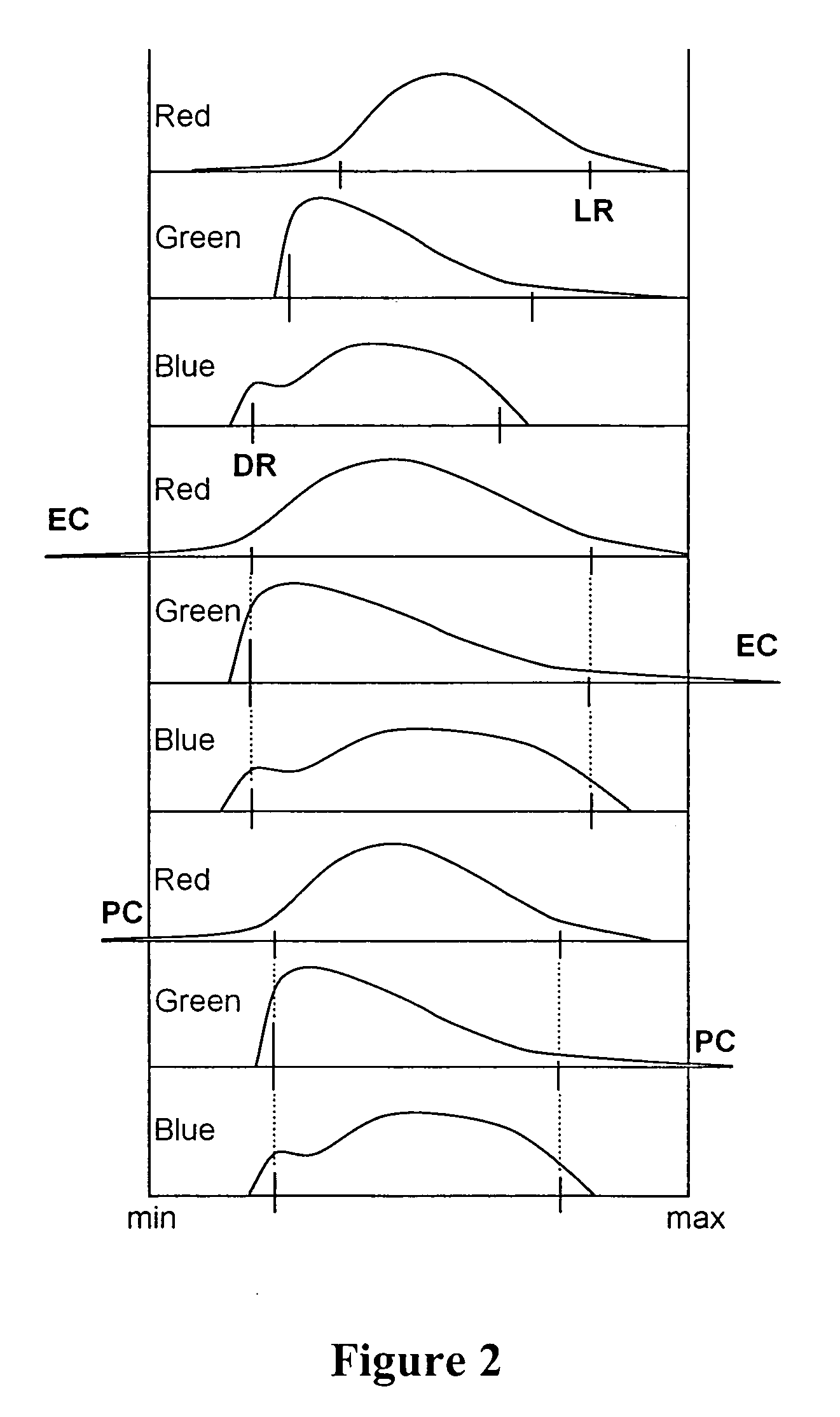Automatic color balance
a color balance and automatic technology, applied in the field of computer assisted imaging, can solve the problems of inability to achieve uniform color, inability to achieve the effect of uniform color, and inability to achieve the effect of uniform image contrast, automatic correction of image color balance, and substantially unchanged image contras
- Summary
- Abstract
- Description
- Claims
- Application Information
AI Technical Summary
Benefits of technology
Problems solved by technology
Method used
Image
Examples
first embodiment
[0053]This embodiment is suitable for processing the majority of normal images that required color balancing, especially when it is desired to perform the correction automatically without user intervention. In the shadow region each of the control points Rlow, Glow, Blow that lies above Xlow is moved towards the reference point Xlow, subject to the condition that the clipping fraction is not exceeded. Thus, if a particular channel does not exceed the predetermined clipping fraction its control point is aligned with Xlow. Otherwise, the channel value of the histogram that corresponds to the clipping fraction becomes aligned with Xlow. The judgement of clipping is done channel by channel, without regard to the amount of clipping in other color channels. Similarly, in the highlight region each of the control points Rhigh, Ghigh, Bhigh that lies below Xhigh is moved towards the reference point Xhigh, subject to the condition that the clipping fraction is not exceeded. Thus, if a particu...
second embodiment
[0054]This embodiment, referred to as the color cast correction, is suitable for processing the majority of normal images that require color balancing and in addition is useful for images that exhibit strong color errors in the form of a distinct color cast. It can also be applied to the automatic correction of images without user intervention. The procedure will be described in two steps for clarity but, as will be appreciated by those skilled in the art, it can also be accomplished in a single step. In step 1, for the shadow region each of the control points Rlow, Glow, Blow is moved into exact alignment with the reference point Xlow. (Note that one color control point is already coincident with Xlow as it was used to determine Xlow). Similarly, in the highlight region each of the control points Rhigh, Ghigh, Bhigh is moved into exact alignment with the reference point Xhigh. This may result in one or more of the color channels being clipped by more than the permitted clipping fra...
third embodiment
[0055]Following the correction according to the first or the second embodiment of the invention the color of the resulting image is well balanced. However, the true color of the scene, especially of neutral gray or white in the scene, may not correspond to the light source used to image the scene. Thus, a scene illuminated with summer skylight of color temperature 9500K would lead to a bluish white. The same scene illuminated with average summer sunlight with some skylight at a color temperature of 6500 K would give rise to a neutral white. Illumination with a flash lamp of color temperature 5000K would produce a yellowish white and an incandescent lamp of 2900K would yield a more orange white. In some cases it is advantageous to restore the appearance of the original scene illuminant even though, strictly speaking, the colors are no longer balanced. There are many ways of achieving this objective as will be obvious to those skilled in the art. One method that has been found effecti...
PUM
| Property | Measurement | Unit |
|---|---|---|
| color temperature | aaaaa | aaaaa |
| color temperature | aaaaa | aaaaa |
| color temperature | aaaaa | aaaaa |
Abstract
Description
Claims
Application Information
 Login to View More
Login to View More - R&D
- Intellectual Property
- Life Sciences
- Materials
- Tech Scout
- Unparalleled Data Quality
- Higher Quality Content
- 60% Fewer Hallucinations
Browse by: Latest US Patents, China's latest patents, Technical Efficacy Thesaurus, Application Domain, Technology Topic, Popular Technical Reports.
© 2025 PatSnap. All rights reserved.Legal|Privacy policy|Modern Slavery Act Transparency Statement|Sitemap|About US| Contact US: help@patsnap.com



